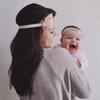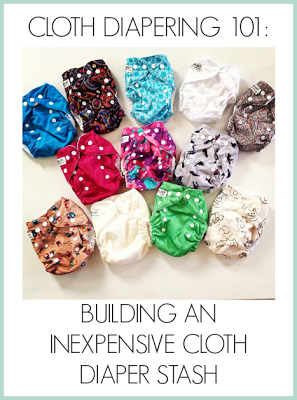 Welcome back for Week 2 in the Cloth Diapering series! If you missed last week, I discussed deciding whether or not cloth diapers could work for you and your family.
Welcome back for Week 2 in the Cloth Diapering series! If you missed last week, I discussed deciding whether or not cloth diapers could work for you and your family.Today I am going to share how you can build a cheap cloth diaper stash! I know that personally for our family, I did not want to invest a lot of money up front when I decided to try cloth. My fear was that I would be all gung-ho for cloth, would spend a couple hundred of dollars in preparing for Rilynn's arrival - only to find that cloth didn't work for us at all. I began extensively researching what types of diapers existed and which options would cost me the least. I also knew going in that I needed to choose a very easy system if I ever wanted to get Ryan on board.
Not only will I share what we ultimately decided on as far as building our stash, but I will also cover the other options available as well. Different families prefer different systems. I know there are even cheaper options than the ones we went with, but I also took into consideration "convenience" when we made our choices.
So without further ado, here are the basics to decide between when building your own diaper stash!
4 Types of Cloth Diapers
First I wanted to go over the four main choices when it comes to types of cloth diapers. Every mama is different and what works for one family may not work for another.
1 // Prefolds & Covers: A prefold is basically a piece of fabric that is sewn to easily stay folded when you wrap it around your little one. You can connect prefolds around your baby using pins or a Snappi. The fabric will obviously get wet, so you place a cover over it as well. Theses covers are usually made of a waterproof fabric and are shaped like a disposable diaper. You can also find all natural covers made from wool, etc. This is the most "old school" of the options and probably what first pops into people's mind when they think of cloth diapering. The main pro to this system is that it is the cheapest. The biggest con is that it is less convenient - aka it may scare your husband, babysitter, in laws and they may be more likely to reach for a disposable.
2// Fitteds & Covers: A fitted diaper is very similar to a prefold, but it looks like a disposable diaper and doesn't require pins or a fastener. Fitteds use velcro or snaps to stay on. They still require a cover since they are not waterproof on their own. A pro for this system is that it is easier to use than prefolds, so other people may be less intimidated by fitteds. On top of that, it is still pretty inexpensive to use fitteds & covers. The big con is that they are still less convenient than the other two options listed below & more expensive than just doing prefolds & covers.
3// Pocket Diapers: Pocket diapers look like a disposable diaper, but are made from fabric and are waterproof. Inside the diaper you will find a slot where you can slide in an insert or even a prefold if you choose. The insert sits below soft fabric that goes up against your baby's bum. Once your child wets their diaper, you simply remove the insert and throw both the insert and diaper in the diaper pail until wash day. The biggest pro is that this is an extremely convenient and easy option when it comes to cloth. If you pre-stuff the diapers, changing your baby is as easy as grabbing a diaper and snapping it on - much like a disposable. The biggest con is that it is more expensive than the two options above.
4// All-In-Ones: Exactly what it sounds like - the cover, absorbent material and inner fabric are all sewn together. These look just like a disposable diaper and connect with velcro or snaps. The biggest pro is that these are the closest thing you will find to the ease of a disposable - your husband will barely notice the difference. The biggest con is they are very expensive and are a lot harder to get clean since the parts of the diaper don't come apart.
So which system did we go with? After finding out the information above I knew that we would be a pocket family. It offered convenience without the highest price tag. I knew there was no way Ryan would use prefolds - he can't even tie his own tie without watching a YouTube video. Pockets seemed easy and the system most likely to set us up for cloth diaper success.
So if you would like more info on any of the other systems, feel free to use Google! You will find a ton of info on each one. Since we use pockets, that's the only system I am familiar with and the one I will talk about in great detail below. I honestly believe it is a great choice for families and has been a breeze for us to adopt as our primary diaper routine.
There are still different options when it comes to pockets. The biggest option is whether you use fitted pockets or one size. Fitted pockets mean that you will buy different sizes as your child grows. This did not make sense to me. Why not buy a diaper that will fit your baby from birth until potty training? I will tell you that one size diapers will most likely not fit at birth like they claim - ours didn't. This was fine since I didn't want to start cloth at birth, but if you decide that's something you want to do, know you will need to buy newborn sized pockets as well.
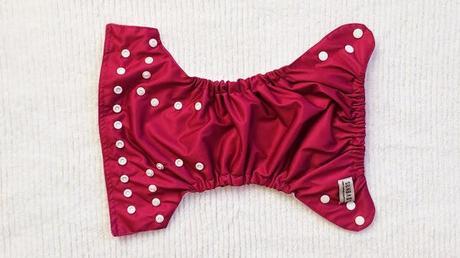
Here is a one size pocket diaper. I know in the beginning I could not figure out how a diaper would fit my child from around 8 pounds until she was out of diapers. This is how a one size pocket diaper works:
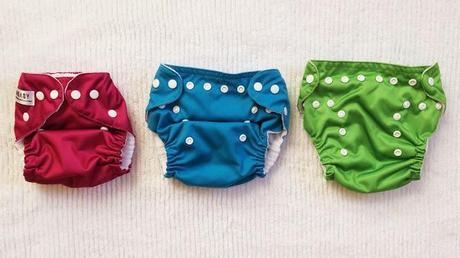
All three of these diapers are the exact same diaper, just different colors and snapped on different settings. The pink one is snapped down to how Rilynn currently wears her diaper. The blue one is snapped a little bigger and the green is at the max size. One of the most important things I have discovered after trying different diapers is that you really want one size pockets that have not only snaps or velcro at the top, but also snaps around the leg holes. This gives you a great, customizable fit, especially since every baby is different and will need a diaper to be adjusted to their body type.
So how do you stuff a pocket diaper?
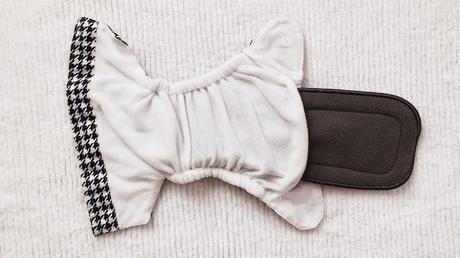
On the back side (the side that sits up against your baby's bum) there will be a slot for you to stuff the insert or fabric you choose. There is also another option where the insert actually snaps in:
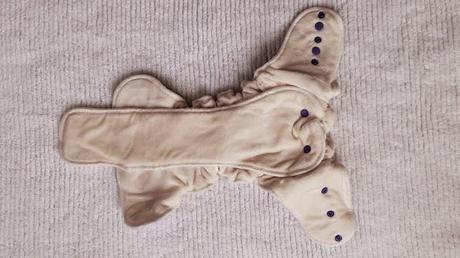
I have a couple of these, but I haven't liked them as much. Because I got the diapers from different shops, the snap in inserts can't be used with another diaper. The snaps are in a different location or slightly farther apart from diaper to diaper.
There are a ton of different options when it comes to inserts for a cloth pocket diaper:
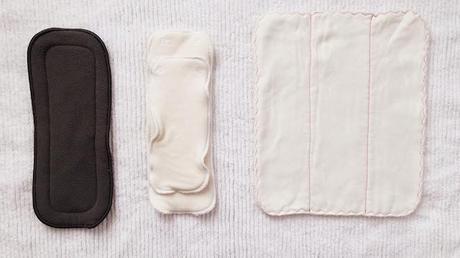
You can choose an insert, which is on the far left. You can also choose snap in inserts, which I talked about above and is shown in the middle. Another option is to use a prefold or another type of fabric to stuff the diapers.
I decided to mostly go with inserts. Now, there are also a ton of different insert choices as well:
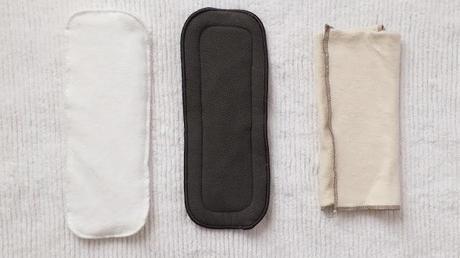
On the far left you see microfiber. It is an extremely common material for cloth diaper inserts. Some people complain that over time, these type of inserts will begin to have build up or smell the easiest. This scared me so I looked for other options. In the middle are my favorite inserts that I own. They are made from charcoal bamboo and are REALLY absorbent. They also supposedly do not have the issues I listed with the microfiber. On the right is an all natural piece of cotton. You can fold it up and slide it into the pocket.
Now there is also a very inexpensive, impressive thing that I discovered can be used as an insert - flour sack towels. I kept seeing them pop up on cloth diaper forums and I couldn't believe something so thin would be absorbent.

Well they work wonderfully and are so cheap! You can find them by dish towels in both Target and Walmart. They run from $.75 - $1 each, which makes them cheaper than most inserts you will find. All you do is fold them into the shape of an insert and slide them into the pocket. They also clean very easily.
My personal opinion is that I love my microfiber inserts, charcoal bamboo inserts & flour sack towels. I think if you have a good wash routine (I will share mine next week) you won't have issues with ammonia or stink. I haven't had issues with any of these options and I also haven't experienced staining either. The charcoal bamboo definitely absorb the most, so they are my top choice when we leave the house.
So now you have pockets and inserts - what else do you need for a cloth diaper stash? Well if you decide to do cloth in public you will need a wetbag or two. These are waterproof bags that you can throw your dirty diaper in until you get home. I keep one downstairs as well for diaper changes and I can tell you they don't leak smell. I wouldn't try to leave diapers in them for days, but you don't have to be concerned with them smelling up your diaper bag when you are out and about. Here are two different wetbags that I have:
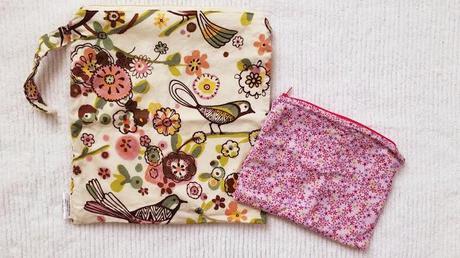
You will also need a large wetbag or waterproof diaper pail liner to keep diapers in in between laundry loads. We have 3 pail liners and I found a diaper pail that can be used for both disposables and cloth - I'll talk more about that next week. Here is one of our waterproof diaper pail liners:
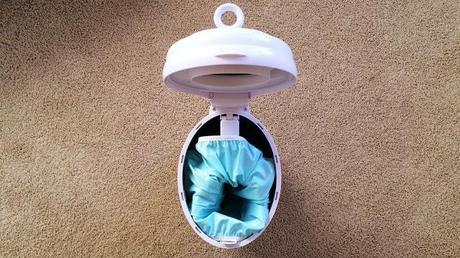
Now you can choose to use disposable wipes or cloth wipes. Cloth wipes can seem like too much, but moms have asked me about them so I thought I would share. We use both. Cloth wipes can be purchased or even made very easily. You can fold and store them like disposable wipes as well.
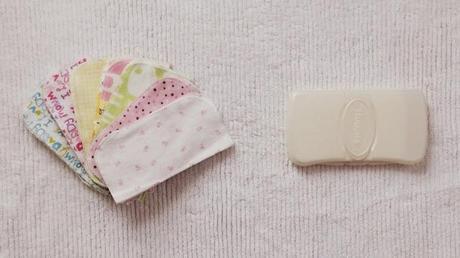
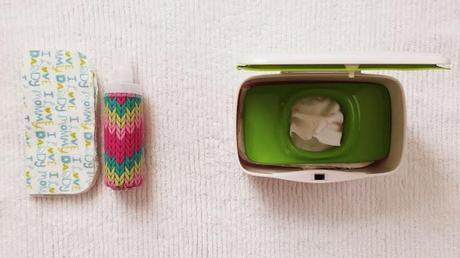
I have figured out how to even put them in our pop up wipes dispenser. You can choose to wet the wipes as you use them or pre-wet them and store them in an airtight container. If you wet them as you use them, you can spray your baby's bottom and wipe or spray the wipes. You can use water or a wipes solution. I will talk in detail about what I've done in future weeks. When I use cloth wipes I just throw them in the diaper pail and wash them with everything else - if I don't have any cloth wipes on hand I use disposable wipes.
Ok, so here is a list of what I believe you actually need to cloth diaper a baby starting around 6 weeks of age. This is close to when we started Rilynn. Obviously if you start at birth you may need newborn specific diapers or a lot more diapers, since newborns go through diapers a lot quicker. Rilynn gets changed every 2.5-3.5 hours during the day and we still use disposables at night. I do diaper laundry ever other day. This means we go through 5-7 diapers a day. Sometimes there are accidents, so I will also account for that. If you plan to use a similar system as me and start diapering around the same time as I did with Rilynn, here is the bare minimum of what you will need:
- 14-20 pocket diapers
- 14-20 inserts
- 2 pail liners/large wetbags
- 2 small wetbags (if you plan to use cloth diapers outside of your home)
I have around 35 pocket diapers, 45 inserts, 3 wetbags and 3 pail liners. I paid less than $200 for all of it. I think it was actually under $175, but I'll say $200 to be safe. I do not use everything I have, so I over prepared. I also worked with Etsy shops and small businesses, reviewing their shops in exchange for cloth diapers. 90% of the cloth diapers I got from Etsy shops do not fit Rilynn yet and are too big, even though they claim to be one size. I also have a couple BumGenius. These are on the expensive side for one size pocket cloth diapers, but a brand that most moms love. I can tell you that BG leaks right now because they are not small enough. Because of that, I use one brand of diapers on a daily basis: Sunbaby.
You can get 12 diapers for $54 currently. If you want 12 diapers and 12 microfiber inserts you can get that for $63. I purchased both. So I got 24 diapers and 12 microfiber inserts for $117. I then purchased 24 charcoal bamboo inserts from a cloth diaper co-op for Army wives here in Colorado for about $30. I bought 2 pail liners for around $18. I spent a little more on other supplies - but the rest I registered for (our baby shower) or received in exchange for reviews. As you can see though:
24 diapers + 36 inserts + 2 pail liners = $135
This is more than enough to cloth diaper your child. I ordered 12 size 1 diapers and 12 size 2. There really isn't a big different in the sizes and Rilynn can wear both. Some moms don't like that Sunbaby diapers are made in China. The owner of Sunbaby, Sun pei, is a mom herself and I have talked to her before. She started the company because she wanted to cloth diaper her own son. She is very open about the fact that they abide by fair labor conditions. At this point they are the only shop I would buy diapers from overseas. Sun pei has always emailed me back very quickly and so I feel comfortable recommending purchasing cloth diapers from her. I buy confidently from Sunbaby and will definitely purchase more diapers in the future.
So in a nutshell, I really recommend Sunbaby diapers to any moms trying to build a cloth diaper stash on a small budget. They allow you to have the convenience of pocket diapers, with a price tag closer to that of prefolds and covers. Sunbaby diapers do not leak, fit small babies better than BumGenius and come in a ton of adorable colors and prints. All of these opinions are truthful and my own - I was not compensated in any way for saying this. I truly believe these are the best diapers I own and it makes me happy that I didn't have to spend $400 up front to cloth diaper my baby.
I also recommend Happy Flute charcoal bamboo inserts. I have another brand as well, but I don't like them as much. The HF are the ones you see pictured above. I was able to buy them through the local diaper co-op for just over $1 a piece. The flour sack towels are also great.
By finding low cost, quality items I am able to cloth diaper my baby for a fraction of the cost you are probably used to seeing!
Next week I will be sharing my washing routine and what is involved with taking care of cloth diapers. I know this is one of the biggest topics moms want to know when it comes to cloth - what do you do with those poopy diapers?!
Also, feel free to leave your other cloth diapering questions below! If I don't know, I'll try and find out. If you leave a question that will be covered in future weeks I will let you know, but I would also like to feature the most asked questions later in the series.
Please note that any comments that hint at a motive of judgment will be deleted. I want all moms to feel free to discuss cloth diapering without being criticized.
